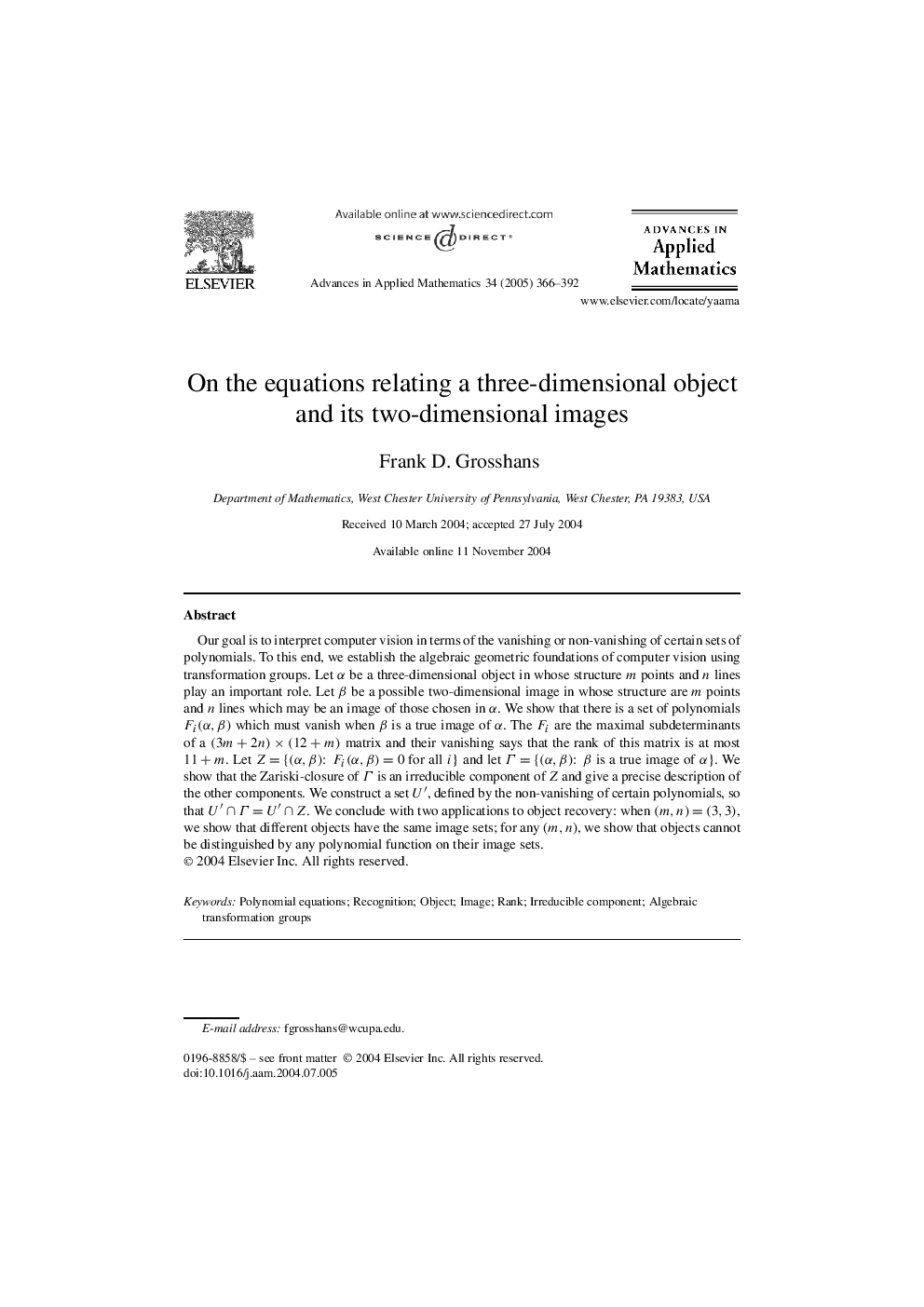| Article ID | Journal | Published Year | Pages | File Type |
|---|---|---|---|---|
| 9506059 | Advances in Applied Mathematics | 2005 | 27 Pages |
Abstract
Our goal is to interpret computer vision in terms of the vanishing or non-vanishing of certain sets of polynomials. To this end, we establish the algebraic geometric foundations of computer vision using transformation groups. Let α be a three-dimensional object in whose structure m points and n lines play an important role. Let β be a possible two-dimensional image in whose structure are m points and n lines which may be an image of those chosen in α. We show that there is a set of polynomials Fi(α,β) which must vanish when β is a true image of α. The Fi are the maximal subdeterminants of a (3m+2n)Ã(12+m) matrix and their vanishing says that the rank of this matrix is at most 11+m. Let Z={(α,β):Fi(α,β)=0 for all i} and let Î={(α,β):β is a true image of α}. We show that the Zariski-closure of Î is an irreducible component of Z and give a precise description of the other components. We construct a set Uâ², defined by the non-vanishing of certain polynomials, so that Uâ²â©Î=Uâ²â©Z. We conclude with two applications to object recovery: when (m,n)=(3,3), we show that different objects have the same image sets; for any (m, n), we show that objects cannot be distinguished by any polynomial function on their image sets.
Related Topics
Physical Sciences and Engineering
Mathematics
Applied Mathematics
Authors
Frank D. Grosshans,
